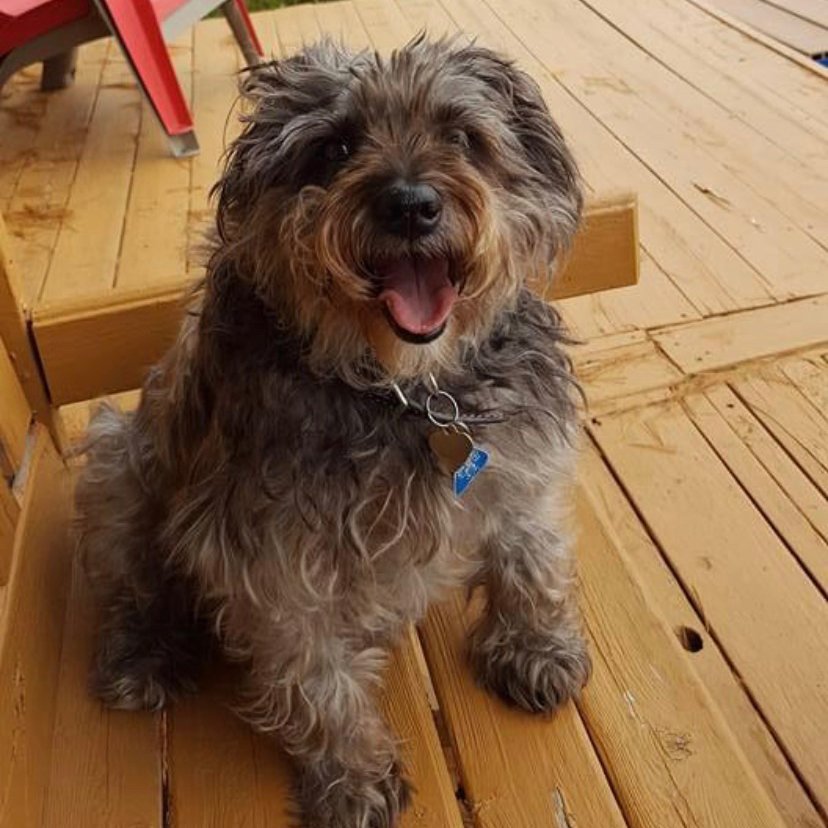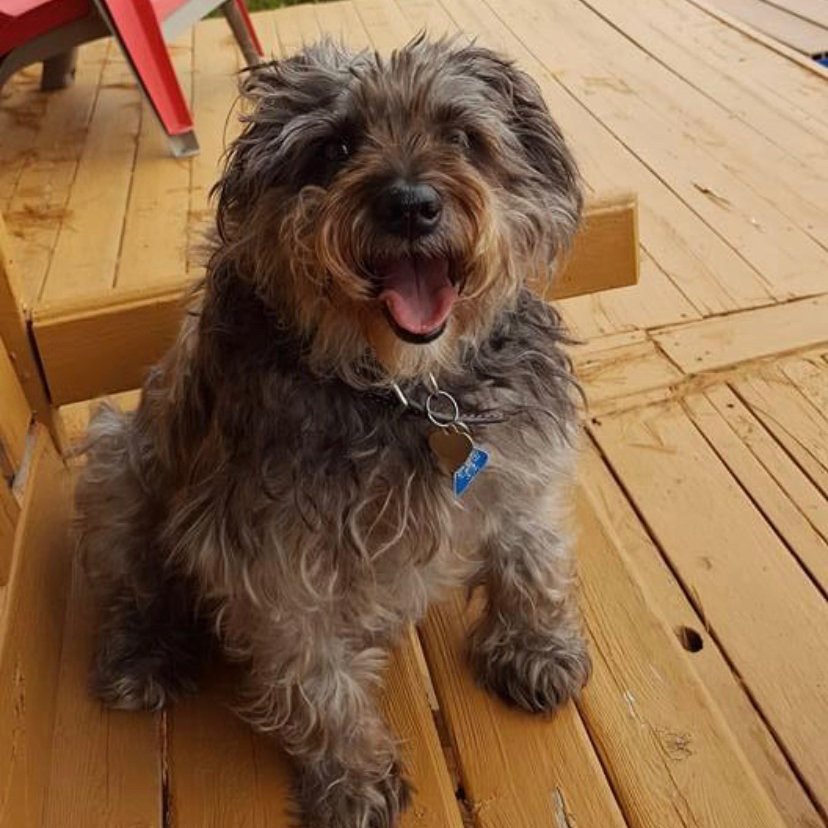

Poppy, my 16-year-old Schnoodle, has always been a vital part of my life. This past year we have spent more side-by-side minutes together than ever before. It has been scary, challenging, and time-consuming. It has also been wonderful. Every kiss, cuddle, and tail wag is and always will be treasured and appreciated forever.
Signs of Problems
Contents
As a senior, life had slowed down for Poppy. Still affectionate, adorable, and holding her own playing with our younger, larger dogs, her eyesight and hearing seemed to be deteriorating. She had had cataracts for a while, but I was concerned because things seemed to be happening rather rapidly.
When I called Poppy to come in from the backyard, she didn’t hear me. I started using hand signals, but of course, she had to notice me for the hand signals to work. Within weeks, the hand signals were no longer working. Each time I put her out, I had to touch her to have her return. She seemed to be a little thirstier than normal, too. Occasionally she cried in her sleep.
Diabetes Mellitus Diagnosis
Our veterinarian examined Poppy and said she looked great for her age. Yes, her eyesight was poor due to cataracts, but she was learning how to use walls to find her way. Hearing loss was not unexpected. However, he wanted to perform some blood tests.
GET THE BARK NEWSLETTER IN YOUR INBOX!
Sign up and get the answers to your questions.
The next day I learned that Poppy had developed diabetes mellitus.
I was asked to immediately bring her to the office to begin insulin treatments. The veterinarian said if Poppy made it through the next couple of months, the prognosis was good. The vet technician taught me how to take her blood sugar and administer insulin shots. Poppy and I left the office with a bottle of insulin, some syringes, and a blood sugar testing kit.
I was worried, sick, and overwhelmed. Had I caused this? Would I, also a senior, be able to give her all of the care she suddenly needed? The short answer is yes. But, it has been a long road, and every day is different.
What is Diabetes Mellitus?
Diabetes Mellitus (sugar diabetes) develops when a dog can no longer effectively use sugar (glucose) nor control the sugar level in the blood. According to the American Kennel Club, the conversion of food nutrients into energy to power the body’s cells involves an ongoing interplay of glucose and insulin.
The main symptoms of diabetes mellitus? Increased thirst, increased urination, weight loss, and increased appetite.
Diabetes in dogs occurs in two forms: insulin-deficiency diabetes and insulin-resistance diabetes. Poppy was diagnosed with insulin-deficiency diabetes, the more common of the two types. Since her pancreas is not producing enough insulin, she needs the daily shots to replace the missing insulin.
Is It Serious?
Yes, diabetes mellitus can be life-threatening. The American Kennel Club explains that “high sugar levels in the bloodstream damages many organs. This often includes damage to the kidneys, eyes, heart, blood vessels, or nerves.” The good news is that it is usually manageable. Exercise, proper nutrition, and sometimes insulin medication can keep a dog feeling fit and happy.
Treating with Insulin Injections
Poppy receives insulin twice daily. She needs food in her stomach within an hour of receiving her insulin. Otherwise, her blood sugar (glucose) numbers can drop dangerously low.
The instructions on this type of insulin say to shake it. I also make sure to warm the refrigerated insulin by rolling it in my hands sufficiently to truly remove its coldness. If it is still chilled, Poppy sometimes will drop to the ground while I am giving the shot. The coldness seems to be uncomfortable for her.
Unfortunately, not only is Poppy often not hungry, but she has also become an extremely picky eater. Making sure Poppy eats after the injection is by far my most difficult challenge. For the previous 15 years, she ate once a day. There was never a problem. Now, most days, she will initially spit out or even refuse to touch most of the food I offer. One day she will like one thing, and the next, she won’t. Skipping a meal is not an option.
Variety is the Spice of Life
Rotating Poppy’s wet foods, using a variety of types and brands, seems to work best. I initially used brands targeted at diabetic dogs, but she didn’t like them.
Poppy only has half of her teeth, so she does not do well with hard food anymore. I always have liver sausage and various cold cuts available to add to her menu. Ground beef, turkey, and leftovers sometimes work. If any of the food is more than one or two days old, she will not touch it. I have read that ham and bacon are not great for her, but if that is all I can get her to eat, once in a while, I give it to her. She will not touch most vegetables, eggs, pumpkin, or baby food options that often work for other dogs.
Smell and taste are Poppy’s only senses that still seem strong. I put the food with the most pungent smell, like some Italian beef leftovers, on top of her other food to entice her to eat. Sometimes that works, but if it doesn’t, I sit on the floor and hand feed her. I need to make sure she smells what is in my hand in order to get her to eat. Once she starts eating, she usually will eat most of her meal. Patience is key!
The Importance of Water
Diabetes mellitus often increases thirst in dogs, but Poppy has become picky about water. I have to make sure to freshen the water throughout the day.
Because she is blind, her water bowl needs to be in the same place so she can easily find it. Sometimes, if her blood sugar is low, she becomes a bit confused and has trouble finding the water bowl. I make sure to lead her to it before and after every meal. If Poppy cries, it is often because she is thirsty. A quick trip to her water bowl seems to make her immediately more comfortable.
Looking Forward
Growing older can be challenging for humans and dogs alike. Managing Poppy’s diabetes, blindness, and deafness has been stressful and sad. However, I have spent an extended amount of time hugging, petting, and hanging out with Poppy due to these challenges, and I am happier for it. Every time she gives me a kiss, wags her tail, or just cuddles with me, I realize how lucky I am. Poppy and I are living the life!
I am not a veterinarian and have no formal medical training. However, I have learned many things that have made life easier for Poppy and me over this past year. Maybe one or two can help others. This information is not meant to substitute for veterinary care or diagnosis. Always reach out to your veterinarian with any questions or concerns.